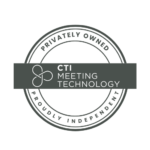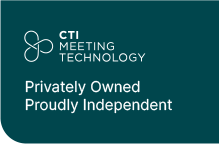Are you tired of manually scheduling and managing your scientific conferences? With the increasing complexity of conference planning, it’s time to explore program management software.
In this guide, we’ll show you how to streamline your conference scheduling with program management software. You’ll learn how to optimize your conference schedule, minimize conflicts, and maximize efficiency.
Brief overview of the challenges of conference scheduling
When it comes to planning, conference scheduling is often one of the most challenging aspects. Meeting organizers have to manage numerous factors, including the availability of speakers, the capacity of rooms, the preferences of attendees, and more. With so many variables to consider, it can be difficult to create a schedule that is efficient, effective, and meets the needs of all the parties involved. In addition, conference schedules often need to be updated and adjusted as new information becomes available, which can be time-consuming and stressful.
Juggling all of this information manually can take a lot of precious time, especially considering that organizers have to keep track of abstracts, panel discussions, and other essential elements that make up a successful conference.
These challenges can make conference scheduling a complex and difficult task, but with the right tools and strategies, organizers can streamline the process and ensure a successful event. This is where program management software comes in, as it provides powerful tools for scheduling and optimizing conference sessions.
Not only that, you can directly build and manage the whole meeting program from the same platform. With a single-platform solution, you can simplify tasks like assigning sessions to rooms, scheduling speakers, tracking abstracts and other roles, and notifying submitters.
Additionally, one of the most important benefits of using a reliable program management software is that it can automatically detect scheduling conflicts, so there’s no need to change all the information manually after everything is set.
The value of efficient and effective scheduling for a successful conference
You might think that this is just another bullet point in your conference scheduling plan, but in fact, efficient and effective scheduling can make or break the success of your conference. After all, scheduling involves organizing the conference sessions, speakers, and activities in a way that maximizes attendee engagement and satisfaction. A poorly planned schedule can result in conflicts, overlaps, and confusion for attendees, making it difficult for them to attend the sessions they are interested in.
If your program is not scheduled correctly, you might not be able to guarantee that all speakers will be able to participate, as they may be unavailable at the chosen time. Likewise, if sessions are not properly scheduled, it can result in delays and create a domino effect that can disrupt the whole conference. This can be frustrating for attendees and speakers, making for a negative experience.
Optimizing conference scheduling also helps to balance the content of the conference. By properly scheduling sessions, organizers can ensure that there is a good mix of topics and levels of difficulty throughout the conference. This helps to cater to the diverse needs and interests of attendees, making the conference more appealing and valuable.
So, as you can see, this is a very sensitive part of your conference planning. But good news: there’s a solution to help you tackle all these challenges. Program management software provides the right tools to manage the entire conference program from the same platform, making this task easier and less time-consuming for organizers. Furthermore, the platform also detects scheduling conflicts to make the process more seamless.
Seems too complicated? Keep reading to learn more about the challenges of conference scheduling and how program management software can help solve them.
Challenges of conference scheduling
Conference scheduling can be a daunting task, especially when dealing with multiple sessions, speakers, and venues. The challenges that will lead to a significant impact on the success of your conference are-
Limited availability of resources:
Scheduling a conference can feel like solving a puzzle sometimes. With a limited number of rooms and equipment available, it can be challenging to allocate all the pieces to the right locations at the right times. Organizers have to ensure the sessions are balanced in terms of content, and give attendees enough time to travel between them.
By utilizing a specialized program management software, conference organizers can optimize scheduling by assigning rooms and time slots efficiently, based on factors such as attendance and availability. This technology avoids conflicts and makes the process much smoother and less stressful.
Additionally, event organizers are able to keep track of all the equipment that is required by adding it to sessions. This way, you can ensure it’s always available and avoid situations that may lead to delays and disruptions during the conference. This is a good way to make the most of limited resources and create a more efficient and effective schedule for attendees.
In short, as an event organizer, you can benefit from a simplified scheduling process thanks to program management software’s task automation capabilities. You can ensure that attendees will have a positive experience by providing them with well-planned sessions that are relevant, and easy to navigate and attend.
Organizing speakers and attendees’ schedules:
Balancing the different interests and priorities of speakers, attendees, and organizers is another significant challenge in conference scheduling. Each group may have specific needs, availability, and preferences that must be taken into account while scheduling both sessions and the conference at large.
For example, speakers may prefer a certain day and time slot of the conference, while attendees may want to attend sessions that align with their interests and availability. And as an organizer, you have to balance the schedule according to the availability of rooms and equipment, while ensuring that sessions are spaced out appropriately to give your conference a natural flow.
Thankfully, program management software helps organizers achieve a balance organizing the sessions by providing a clear overview of the whole schedule of the conference. Not only that, but the software can also detect scheduling conflicts automatically and prevent any further problems. You can simplify this process even more by choosing a provider that offers a Calendar View.
Providing a diverse and engaging program:
At the end of the day, content is the most important part of any conference, and organizers need to ensure that the program is interesting and engaging for everyone participating. But we know that this is easier said than done!
Organizers can use the Calendar View in the program management software to have a clear overview of the whole conference. You can quickly identify gaps or overlaps in topics, evaluate the balance of session formats (such as oral presentations, panels, keynote speeches, etc.), and ensure that there is a diverse set of speakers presenting. Not just that, but you can also use the generated reports and analytics to identify trends, common interests and preferences among attendees. This can lead to higher participation and a better overall experience.
Time and effort required for manual scheduling:
Manual scheduling can be an incredibly time-consuming and burdensome task. Conference organizers must consider a wide range of factors when creating a schedule, from the availability of speakers and rooms to the preferences of attendees and exhibitors. Additionally, any modifications to the schedule, such as a speaker cancellation or a room change, can quickly throw the entire schedule off balance, forcing organizers to start from scratch.
Not to mention that manual scheduling is prone to errors and inconsistencies. Organizers may overlook important scheduling conflicts, resulting in missed presentations and other problems. In contrast, program management software can help organizers identify scheduling conflicts and make recommendations for resolving them. This ensures that the schedule is always accurate and up-to-date!
By leveraging program management software to streamline the scheduling process, organizers can save valuable time and resources, and focus on creating a memorable and impactful conference.
How a program management software can help you?
Program management software is a valuable tool for conference organizers that are looking to streamline their conference planning and management. With features such as real-time scheduling, rescheduling, and collaboration tools, this software can help you optimize your conference program and maximize efficiency. It allows you to create a customizable conference program, manage scheduling conflicts, and adjust schedules in response to last-minute changes. At CTI Meeting Technology, how we offer program management software that can help you achieve your conference goals with ease are as follows-
Overview of features in program management software:
Program management software offers a variety of features that can help conference organizers optimize scheduling and create an efficient and effective program. These features can include tools for assigning rooms and timeslots, balancing session content, managing speaker information and availability, and providing real-time updates to attendees. By utilizing these tools, organizers can streamline the scheduling process, reduce errors and conflicts, and create a more engaging and diverse program.
Also, program management software can help conference organizers assign resources efficiently based on factors such as availability, attendance, and preferences. This ensures that sessions are held in the most appropriate locations so attendees can have a seamless experience throughout the conference.
Make sure your chosen provider has other modules integrated in the same platform to facilitate the whole conference planning process.
Benefits of automated and data-driven scheduling:
One of the main benefits of automated scheduling is that it can help organizers to tailor the conference program to meet the needs and preferences of attendees. Your program management software of choice should offer an overview of each session, to easily detect the best fitting timeslots and locations based on speaker availability, attendee interests, and room capacity. This helps ensure that attendees have access to a diverse range of topics and sessions, while also maximizing the use of available resources.
Another benefit of automation and data-driven scheduling is that it can help minimize conflicts and scheduling errors. With program management software, organizers can easily view and manage schedules for multiple rooms and tracks, and quickly make changes as needed. This helps avoid scheduling conflicts and ensures enough staff and equipment for all the sessions.
Furthermore, program management software can provide real-time data and analytics reports on session attendance and feedback, helping organizers make data-driven decisions for future conferences. This can help to identify popular sessions and speakers, as well as areas for improvement, which ultimately leads to a better conference experience for attendees and increased commitment from speakers.
Overall, automation and data-driven scheduling are essential tools for organizing successful scientific meetings. Organizers can save time and effort with the software, create more balanced and diverse schedules, and minimize conflicts and errors, leading to a more successful and positive conference experience for all involved.
Improved communication:
Counting with a centralized platform for organizing, sharing, and managing presentation content can streamline the entire planning process and make it easier for all involved parties to contribute.
One of the key benefits of presentation management software is that it can help to ensure that all presentation content is consistent and up-to-date. With this software, presenters can upload their presentations to a central repository, where they can be reviewed and approved by the conference organizers before being made available to attendees. This can help to ensure that all presentations are on topic, relevant, and accurate, which can improve the overall quality of the conference.
You may need to reach out to those speakers that did not complete their submissions correctly. To make the communication easier, you should look for a provider that has a communication tool integrated into the platform. Organizers can easily design templates and automate messages to speakers. Thanks to this automated process, you don’t need to waste time checking all files and sending reminders to speakers individually!
Real-time updates and adjustments:
It is difficult to plan a whole conference beforehand, and many aspects of it cannot be determined until the meeting date gets closer. Having the possibility of making real-time updates and adjustments to schedules is also be a significant benefit of using a program management software.
With traditional schedules that are not integrated with the rest of the conference management system, any last-minute changes or adjustments can be difficult and a waste of time to communicate to attendees and other stakeholders. However, with an integrated presentation management software, updates to the schedule can be made in real-time, and attendees can be immediately informed of any changes with a notification.
This feature is particularly useful in the case of unforeseen circumstances such as speaker cancellations, room changes, or changes to the session order. Conference organizers can quickly and easily update the schedule and communicate the changes to attendees via the conference platform, ensuring that everyone is on the same page and minimizing confusion for attendees and speakers.
Data Analysis:
As we mentioned before, a reliable program management software provides analytics reports with valuable insights into attendee behavior and preferences. By considering data on attendance, feedback, and engagement, conference organizers can gain a better understanding of what worked and what didn’t, and use that information to improve future conferences.
Real-time updates can also help optimize scheduling by allowing organizers to adjust session times or locations based on attendance and feedback data. Let’s say that a particular session is more popular than expected. As the organizer, you can quickly have a clear overview of the rooms available and make adjustments to the schedule to accommodate a larger group of attendees. This helps ensure that attendants have the best possible conference experience and that the conference is a success.
Wrap Up…
In summary, program management software offers many benefits for scientific meeting organizers in terms of scheduling. It can help with limited availability of resources such as rooms and equipment, balancing conflicting interests and priorities of attendees, ensuring a diverse and engaging program, and significantly reducing the time and effort required for manual scheduling.
Furthermore, the automation and data-driven scheduling features can help optimize schedules, facilitate collaboration and communication with speakers and attendees, and provide real-time updates and adjustments to schedules.
Additionally, program management software can assist with assigning rooms and timeslots based on capacity, accessibility, and proximity, balancing session content based on topic, level of expertise, and audience interest, creating personalized schedules for attendees, and monitoring and managing schedule changes. By using an integrated software, scientific meeting organizers can save time, increase efficiency, and ultimately create a successful and enjoyable conference experience for all attendees.
As a conference organizers, there are a dozen of tasks and processes you need to manage in a tight period of time, which makes it more important than ever to have an efficient scheduling process for your meeting and make that part of the planning program a lot easier. Program management software can help you achieve that goal, saving you time and reducing stress. So if you’re still manually scheduling your conference, it’s time to consider the benefits of program management software. With the right tools, you can optimize your conference scheduling process and create a successful event that leaves a lasting impression on your attendees and speakers.






